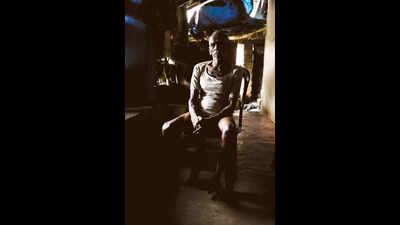ARTICLE AD BOX

Bhiu said it is inevitable that his son takes over the role of budhvont after him
A remnant of the ‘Gaonkari’, or age-old community-led administration system, the wise men — whose word is final — now survives only among the tribals, largely in the Canacona taluka. There are, however, growing fears that the ancient system of ‘budhvont’, as it’s locally known, is on its way out

Bhiu Sukdo Gaonkar, wearing the traditional kashti cloth covering his loin, cannot figure out his age. “I should be around 80 years old now,” he said, sitting in the verandah of his rudimentary home in the tribal hamlet of Mollar at Gulem, Canacona.Back then, parents never bothered to register children’s birth, explained a neighbour standing nearby.In his settlement, however, Bhiu’s financial or educational status does not matter. Here, only his wisdom counts, and is greatly valued.

The budhvont’s job is performed as a duty towards the village, with no remuneration paid for the services, said Permanand, who runs a tea stall to make a living
For the 100-odd homes at Mollar, he is the ‘budhvont’, the village wise man, a system still prevalent in the tribal belts of Canacona, Quepem and Sanguem talukas. The practice, however, is most prominent in villages of Canacona.“If there is any dispute in the village, the people come to me for the final word. One cannot argue with the budhvont,” Bhiu explained.Among the Gaonkar families in the tribals, the role is mostly hereditary, unless its transfer to another family is necessitated by circumstances. Generally though, the role is transferred to the male heir of the budhvont’s family.Bhiu, for example, has already started preparing his son for the role, where a certain decorum is naturally expected of the budhvont.
Villagers look towards him not just for wisdom, but expect him to lead with kindness, respect, and more importantly, a helping nature.

Bhiu with his wife Sita
At Gulem, the Gaonkar is assisted by one or more Velips, whose role is more to perform religious rituals in the village. But if there’s any major dispute, the Velips assist the Gaonkar in arriving at a solution.In his Gulem hamlet, Ganesh Janu Velip, though assigned religious duties, almost gains the status of a wise man by virtue of being assistant to the Gaonkar.
At 70-odd years, the role has come to him only recently after both his older brothers, who had been performing the duty, passed away.“You learn the job by watching your elders perform their role and by asking questions. Here, one Gaonkar and two Velips form the village committee of sorts. If there is any dispute, a panchayat can also be called. All villagers are bound to attend such a meeting,” explained Ganesh.The highest punishment for a villager under this system is to banish the entire family of the erring person from the village.“As long as we follow this system, our village will remain a village,” Ganesh’s wife, Lila, said. “A panch member changes every five years, but a budhvont does not.”At Baddem, Cotigao, the budhvonts bear the burden of an even bigger responsibility.

Premanand alias Janu Gaonkar is the wise man for around 110 houses with a population of close to 600. With his father having passed away early, he had to take on the role of budhvont rather young at 35.“The budhvont gets no payment for his work. We do our traditional farm cultivation. The budhvont’s role is to be carried out as a duty,” said Premanand, adding that the match of any young couple can be formalised only with his blessings here.The concept of budhvont, according to researchers, comes from the earlier practice of gram rajya, or local self-governance, in the village.“It was practised widely under the Gaonkari system,” said Pandurang Phaldesai, an anthropological researcher and former member secretary of the Kala Academy.
“The budhvont was the head of that particular Gaonkari community, now known as the comunidade system. Nobody would go against his word and he could banish any wayward element.”Besides Canacona, the tribal villages of Quepem and Sanguem too have the system, but youngsters, in contact with urban areas, have grown distant.“After a few years, there is no certainty of this continuing because now the gram panchayats and panchs have come in.
This has reduced the budhvont’s influence, and I feel the system will eventually fade out,” said Phaldesai.At Cotigao, the system is practised in its least diluted form, with the budhvont calling monthly meetings without fail, even without any emergencies, to review developments in the village.But even Premanand admits that the belief in the budhvont is bound to change with time.“Now, each villager pursues their matters on their own,” said Premanand. “People once feared the budhvont, but now, it’s a democracy. Today, people even abuse the chief minister, so what chance does a budhvont stand?”

 1 hour ago
7
1 hour ago
7









 English (US) ·
English (US) ·